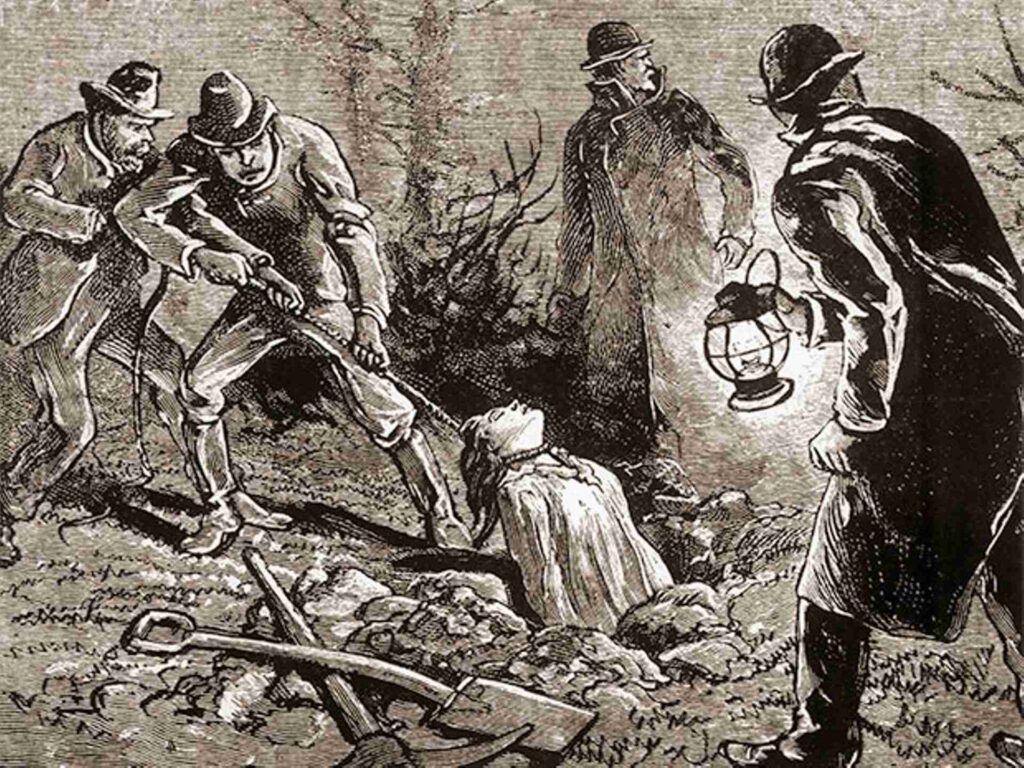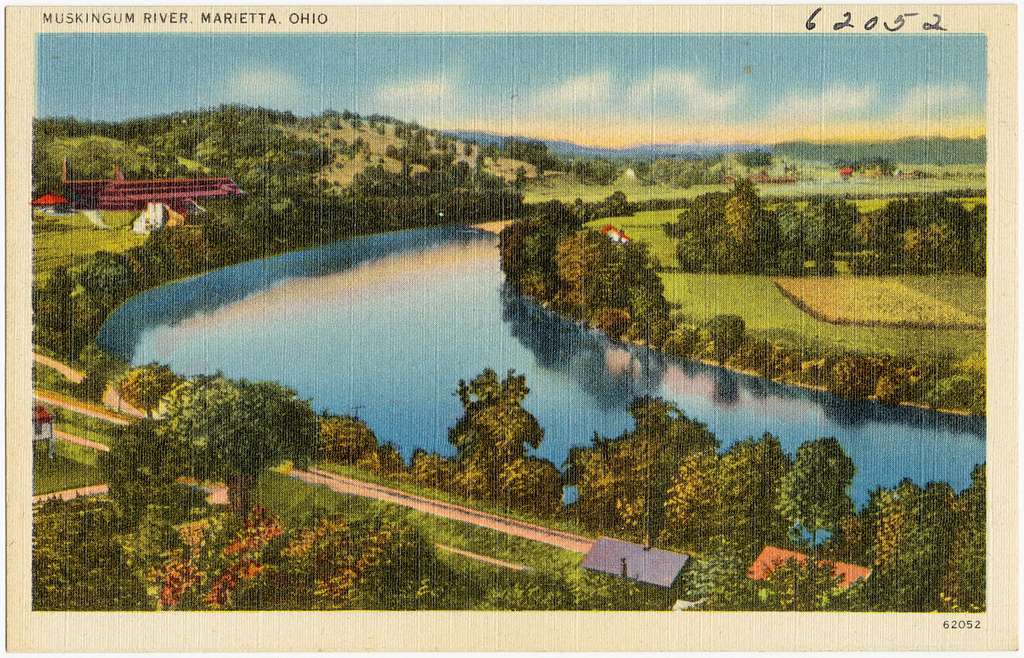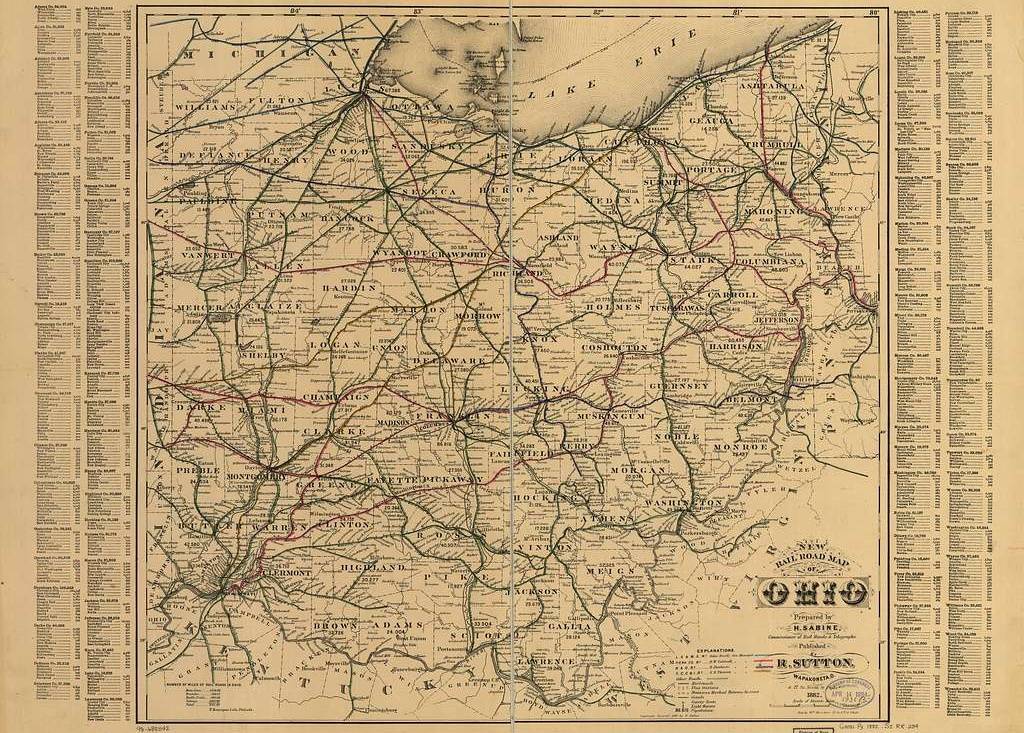Throughout most of the nineteenth century, Cincinnati was one of the more prominent (not to mention one of the largest) cities in America. By 1850, we only had a few “States” west of the Mississippi River, everything else was just a territory or some kind of unorganized lands that used to belong to someone else but it’s America now and the country needed to figure out what to do with it.
Cincinnati’s location on The Ohio River meant that anyone traveling from the Eastern States pretty much had to go by it, since the river was the main route to get just about anywhere. So, anyone traveling down the river was almost guaranteed to stop in Cincinnati, pick up some supplies, or maybe just spend a few days enjoying their last days of modern life before heading out into the slowly developing country beyond.
The reverse of this is true, too. For those already residing somewhere in “the west” and who needed to head East to pick up supplies, Cincinnati was the first city they would come to, so … needless to say, it was an important city.
As the city continued to grow, it began to develop other needs – not just for the city itself, but for the expanding nation as well. One good example of this is the medical field. Cincinnati needed to train its own doctors, of course, but as doctors were also needed in The West, they also needed to be trained somewhere, and Cincinnati seemed the perfect choice. This is the reason that Cincinnati at the time had more medical schools than anywhere else in the nation.
The medical field was also going through a bit of a transition, too, as the field was just starting to look more like what we have today and less like it had been with all that bloodletting, folk remedies, among other truly bizarre things that really happened. They were also just starting to understand how the human body actually worked, although more progress needed to be made.
This created a pretty big problem – not just in Cincinnati, nor Ohio, but really all over the world. How do you study the human body and figure out what all those things inside it do when cutting open perfectly good people tends to unalive them?
The solution – you use the recently diseased. Medical schools everywhere began paying people to allow them to use the bodies of their newly dead loved ones for dissection or medical experimentation, and since nearly everyone at the time could stand to use a few extra dollars to help pay for burials, quite a few people took advantage of this.
It just wasn’t enough. Either not enough people were dying, or not enough people were donating-selling their bodies to medical schools. But these schools wanted fresh bodies really really badly, so they tried paying people even more for recently departed. And that still wasn’t enough.
This is where the story takes a dark and maybe even sinister turn.
The Resurrectionists
Medical Schools were starting to get desperate. They wanted to train new doctors with all the new medical knowledge that was being discovered, but that meant that they needed fresh bodies to dissect so they started paying as much as they could. Even in towns with a single medical school, there weren’t enough corpses to go around, but in a city like Cincinnati with lots of medical schools it meant there was competition, so it was only a matter of time before things got out of hand.
All it would take was one individual who would say, “you want bodies, I can give you bodies for the right price” to come along … and a medical school that would say “here is your money, we don’t care where the body came from or how you got it.”
In a nutshell, that’s kind of exactly what happened.
A new and somewhat illegal profession was born – Resurrectionists.
Believe it or not but finding (fresh) dead people isn’t as easy as one would think. Yes, people die every day, especially in larger cities, but most of the places where you would expect to find a body or two (say, a funeral home) are going to have some protections in place to make sure nobody walks off with a corpse or two. There are also lots of funeral homes in town, so how do you know which ones might have one worth taking?
On a similar note, you can often find fresh corpses in cemeteries, too. But, again, there are lots of those and once someone is put in the ground, they’re only going to remain fresh enough for a very short period of time … and if you went from cemetery to cemetery looking for a freshly dug gravesite, you can’t do it all in a single night, and by the time you actually find one, you’re probably going to be too exhausted to dig it up, lift it out of the ground, and then carry it to wherever it needs to go.
In order for this scenario to work, you would need to have a system …. but, more than that, you would need a network … something like a morbid kind of spy ring … someone to alert you to where and when fresh bodies can be … well … stolen …
Even though there was good money that could be made doing this – there weren’t that many with the brains (or the connections) to actually pull it off.
To be fair, “body snatching” had been a thing for over a hundred years at this point in time, however it was during the mid nineteenth century that the practice seemed to get a new life (so to speak).
There’s even been a word (since the seventeenth century) for people who do this: Resurrectionists. (Because, I suppose, they resurrect the dead and give them a new life as a medical cadaver…?)
William Cunningham
There was one criminal in Cincinnati who appeared to be a much more prolific resurrectionist than any of the rest. His name was William Cunningham, or Old Cunny. (Both “The Ghoul” and “The Old Man Dead” were also, occasionally used.)
There is much we don’t know (nor for certain) about the life of William Cunningham. We are fairly confident that he was born in Ireland, perhaps some time around 1807 – it’s kind of hard to tell. We know that at some point he arrives in Virginia, stays there for a few years then heads off to live in Cincinnati.
For a legitimate career, William was a wagon driver, being hired to move things (but occasionally people) from one place to another. (If Aunt Irma had bought a dressing table at the local shop, she might hire a Wagon Driver to pick it up at the store and take it home for her.)
At night, he’d kind of do the same thing, except that what he was transporting was a dead body that he had most likely uninterred which he would take whichever medical school was paying the most that night. And, he had developed quite a reputation.
The thing about William Cunningham, though, was that he was very smart. And he used his intelligence to his advantage.
While most resurrection men would spend the time to dig complete caskets out of the ground (a lengthy process that required extra manpower and effort) Cunningham would dig a much smaller hole with just enough room to burst open the head of the coffin, allowing him to extract the body in a fraction of the time. This would not allow him to make a few extra dollars by selling the used coffin, but it did allow him to “resurrect” an extra corpse or two per night.
William Cunningham was always described as a formidable man, with a solid jawline and overly masculine appearance. He presented himself with an air of authority and many believed that he was a soldier during the Mexican American War, although whether he actually did is debatable. According to Cunningham, he did fight for a time until he got bored, so he just left.
In 1871, Cunningham and two of his associates were flagged down by the police after leaving the Walnut Hills Cemetery. Cunningham began schmoozing with the officer as another walked to the back of his wagon where two of his associates were spotted in the back of the wagon by a different officer. When the second officer saw the two men were sitting on a large canvas bag, he ordered the men to step down and inspected the bag, horrified at its contents when he looked inside. All three men were promptly arrested.
At the Ninth Street Police Station, officers initiated a thorough investigation, during which they found a handwritten note from a grave digger detailing when some burials were going to be. Figuring they had a good, solid case against the men, they locked them in a cell and called the coroner’s office to retrieve the bodies for reburial. A short time later, two men arrived and said they were from the coroner’s office and took the body away. Only problem was – they were Cunningham’s associates.
Now, without any proof that there had been any bodies – the police had no choice but to let Cunningham and his two associates go free.
On another occasion, a short time later, Cunningham was, once again, stopped in his wagon at night by a police officer, although it’s unclear at what point the officer recognized the man. The back of his cab was searched, but it was empty. Cunningham had simply placed the fresh corpse in the seat next to him, and when approached by the police he pretended the man was drunk and on the verge of passing out. Somehow the rouse worked and the resurrection man was allowed to leave.
Just as he was about to get away with it, his horse got spooked and the corpse tumbled out of the passenger seat. Seeing this, the police ran over to aid the man and were shocked to find that he was dead. And, it kind of looked like he had been dead for a little while. Once again, Cunningham was arrested.
The word on the street was that Cunningham was not the kind of person you wanted to cross, as a small group of medical students found out after they refused to pay him for delivering some bodies. He arrived a few nights later, this time with a new, fresh set of corpses that the medical students were all too eager to accept. What they didn’t know what that each one had just died of smallpox, which they would soon learn the hard way when they started to develop symptoms themselves after dissecting them.
Being among the more famous residents in town might not be such a good thing if you happen to be a Resurrection Man, since it’s kind of hard to enjoy your fame while most people hate you. This, somehow, didn’t seem to deter Cunningham one bit.
One night, he and his helpers were drinking at a local tavern which just happened to be located next to a cemetery with a couple of fresh burials. Well after the sun had gone down, the men made their way out of the bar and headed toward the gravesite only to discover that a large posse from the tavern had followed, wanting to end things there for good. The leader of the group came forward and demanded that Cunningham and his men stop what they were doing – he was making a citizen’s arrest.
Cunningham stopped and addressed the man and played him like a fiddle. He agreed to turn himself into the local police station if the mob would not harm him in any way, and he agreed to let the mob accompany him to the jail, saying that he would rather be alive and in a jail cell than be killed dead where he stood. The crowd seemed to accept this and slowly began to follow Cunningham out of the cemetery.
As the crowd passed the tavern they had just been in, Cunningham had one last request. Since he was going to be locked up for a very long time, why not allow the man one last round of drinks to calm his nerves. So, the group of men entered the tavern once again, where Cunningham purchased drink after drink for all the guys. Within a couple of hours, every last men who was in the posse was too drunk to know what day it was, let alone remember (or maybe care) that the man who had just supplied them with large amounts of alcohol was or why they were escorting them to the police station … so they all just went home.
Cunningham, and his men, left the bar a short time later, crossed the street, and resumed their task of “resurrecting” a couple of men.
The Tale of Charley Keaton
One of William Cunningham’s more trusted sidekicks was a man by the name of Charley Keaton, a young African American man who was married to a young White lady – which I wouldn’t say was as much uncommon as it was darn near unheard of (and in some places, slightly illegal). But, somehow, I guess, they made it work.
Chraley quickly proved to be a formidable helper, earning $3 per cadaver (which was a nice sum in those days). Within a year, he was earning $8 per, even though Cunningham’s other helpers earned way less. Charley proved himself by being willing to do the dirty work (literally, in this case) and getting the job done.
Like William, Charley was smart. Both men knew that without Charley’s help, Cunningham’s “business” was likely to suffer, so a few years into their arrangements, Cunningham brought Charley in as a full partner. He then received half of the money collected per corpse, after other expenses had been taken care of, first.
While William Cunningham liked to pull corpses out using ropes, Charley’s way of doing things was a bit more simple, if not morbidly disgusting. He would lower himself into the hole, wrap his arms around a body, and lift it out and place it in the arms of another or lay it on the ground for himself to haul to the wagon.
At this point I’m trying not to picture him coming home and kissing his wife, but chances are she was out there working with him anyway so that’s a mental picture I really don’t need bouncing between my ears.
After William Cunningham passed away on November 12, 1871 – Charley (and his wife) took over the “business”.
Charley tried to soften the image of resurrection men, as if such things were possible. He abhorred the term “body snatcher” and tried to rename the subject to “subject gathering” but, no – you’re stealing the remains of people’s loved ones and desecrating them all in the name of science so … um … no.
At the ripe old age of 40, Charley knew that his time on this earth was most likely about to come to an end. Whether that was from all the diseases he contracted pulling the newly dead out of the ground, or karma, we may never know (but I think it was most likely both). Anyway, before his ultimate demise (on August 8, 1878) he had approached one of the medical schools and sold his “body” leaving instructions to be followed after his death. After a brief memorial service, his wife did accompany the body to the medical school to hand it over.
This was something like what William Cunningham had done, except for one or two small details.
The big one was that after Cunningham’s body had been dissected, his skeleton had been removed and wired together and put on display at the medical school, where it lasted for a very long time. Unfortunately, over time, his skeleton had managed to go missing, and nobody’s really sure what happened to it.
Charley’s wife, it would soon be discovered, had remarried less than a year after his death and it wouldn’t be long before her second husband died, too and his body was taken to the local medical school. A few years later, her third husband would also die and she would fall under suspicion, police wondering if she had killed her husband for his life insurance money. I cannot tell if an arrest or trial was ever made, but after this her record goes as cold as the stiffs she and her husband were known for selling.



